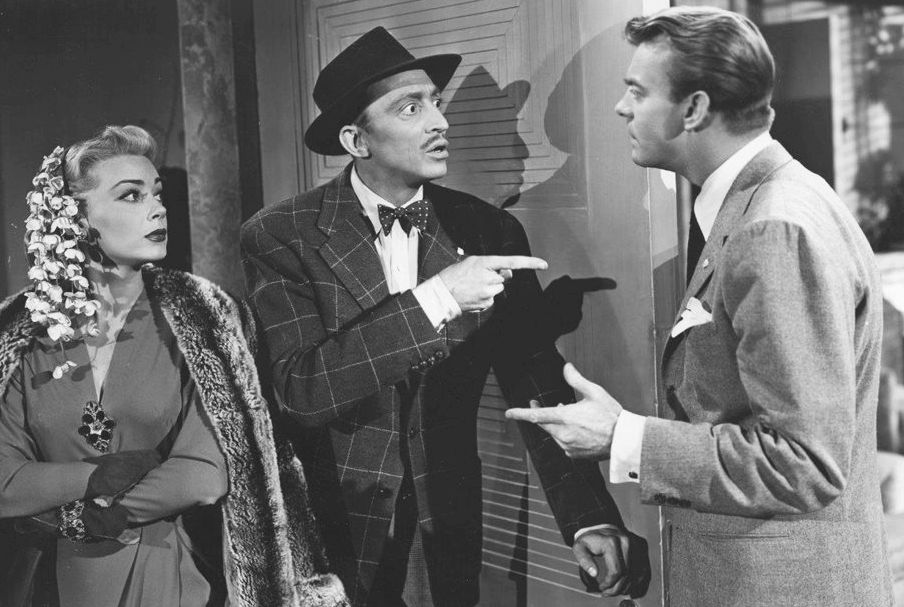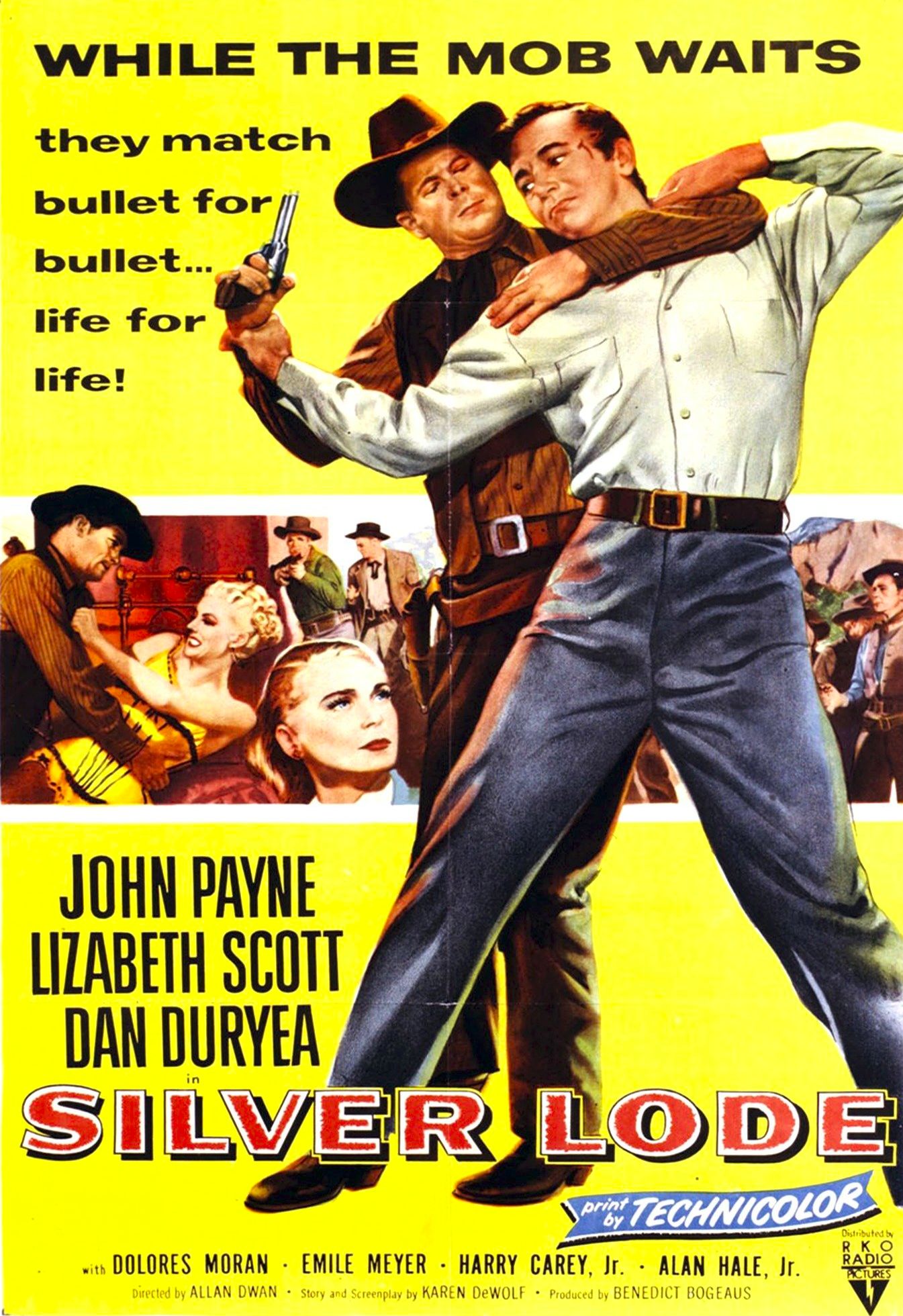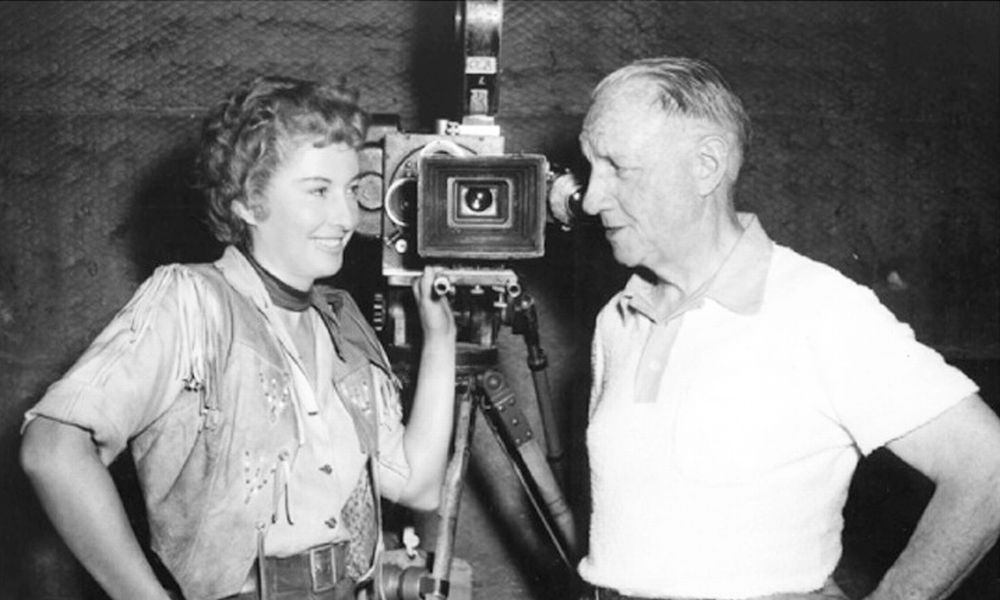"If there is a king of low-budget Hollywood directors, Dwan should wear the crown. When given quality material with a solid budget, he could turn out brilliant cinema (Robin Hood, 22; Suez, 39; Sands of Iwo Jima, 49). His particular genius was transforming lowly scripts, shoddy production values, and mediocre performers into something memorable (While Paris Sleeps, 32; Driftwood, 47; The Woman They Almost Lynched, 53)." - William R. Meyer (The Film Buff's Catalog, 1978)
Allan Dwan
Director / Producer / Screenwriter
(1885-1981) Born April 3, Toronto, Ontario, Canada
(1885-1981) Born April 3, Toronto, Ontario, Canada
Key Production Country: USA
Key Genres: Western, Drama, Comedy, Adventure, Crime, Action, Swashbuckler, Romance, Adventure Drama, Traditional Western, War, Melodrama
Key Collaborators: Van Nest Polglase (Production Designer), Benedict Bogeaus (Producer), John Alton (Cinematographer), James Leicester (Editor), Louis Forbes (Composer), Reggie Lanning (Cinematographer), Arthur Roberts (Editor), Gail Patrick (Leading Character Actress), Binnie Barnes (Leading Character Actress), Nathan Scott (Composer), John Payne (Leading Actor), Dennis O'Keefe (Leading Actor)
Key Genres: Western, Drama, Comedy, Adventure, Crime, Action, Swashbuckler, Romance, Adventure Drama, Traditional Western, War, Melodrama
Key Collaborators: Van Nest Polglase (Production Designer), Benedict Bogeaus (Producer), John Alton (Cinematographer), James Leicester (Editor), Louis Forbes (Composer), Reggie Lanning (Cinematographer), Arthur Roberts (Editor), Gail Patrick (Leading Character Actress), Binnie Barnes (Leading Character Actress), Nathan Scott (Composer), John Payne (Leading Actor), Dennis O'Keefe (Leading Actor)
“Dwan's career spanned the history of American motion pictures, from the days of silent one-reelers to modern Technicolor features that utilized some of the cinematic techniques whose use he had pioneered. By his own estimate, Dwan participated in the making of 1,850 films, some 400 of these as director. (Only a few of his works remain extant.)” - The Virgin International Encyclopedia of Film, 1992
"Through the 1950s Dwan continued to turn out interesting pictures like Silver Lode, Cattle Queen of Montana (both 1954), and The Restless Breed (1957), most of which refused to take themselves too seriously and were better than their budgets and schedules would normally permit." - Leonard Maltin's Movie Encyclopedia, 1995

Brewster's Millions (1945)
"Widely acknowledged as one of the great movie pioneers, Allan (born Joseph Aloysius) Dwan has been called 'the last of the journeyman film-makers'… At first his work was fast, furious and routine, but he soon became known for his technical innovations: some hold that he invented the dolly shot in 1915; certainly he advised Griffith on mounting a moving camera to film the giant Babylonian set in Intolerance. By the early '20s he was promoted to making prestigious star vehicles… Dwan's transition to sound seems to have been painless; even so, on signing a long-term contract with Fox, he was relegated to B-features." - Geoff Andrew (The Film Handbook, 1989)
"The 400 or so films that Allan Dwan directed are playgrounds for their actors, sandboxes of freewheeling experiment. Trained as an electrical engineer, Dwan was a technical innovator, but his flourishes were always in service to the specific talents of his performers. In his self-effacing style, elaborate tracking and dolly shots never call attention to themselves, but only to the characters on-screen… Dwan’s films are filled with assertive female characters, from the Gloria Swanson silents through Natalie Wood’s tiny truth-teller in Driftwood (1947) to the veritable matriarchy of Woman They Almost Lynched (1953)." - R. Emmett Sweeney (R. Emmett Sweeney Film Criticism, 2013)
"He studied at Notre Dame University, intending to become an electrical engineer. His expertise with lighting brought him into the film industry. where he made his directorial debut with Branding a Bad Man (1911). A true pioneer, he made more than 300 films in his 50-year career, working in every genre from adventure classics to B-movie westerns." - Chambers Film Factfinder, 2006
"It is too early to establish any coherent pattern to Dwan's career as a whole, but it may very well be that Dwan will turn out to be the last of the old masters. Silver Lode displays a classic circularity of remembered technique, unifying the varied themes of the film by repeating the same images in different contexts. From the Fairbanks period in the silents, to unassuming comedies in the thirties and forties, and to Westerns in the fifties, Dwan has been as active as he has been obscure. Yet, one can recall Brewster's Millions and Rendezvous with Annie with fond pleasure unprompted by the alleged mystiques of the auteur theory. Consequently, there may be much more to be said about Dwan." - Andrew Sarris (The American Cinema, 1968)
"Like many of his contemporaries, he turned to Westerns during the 1950s, with considerable success, and the career of this remarkable man finally shuddered to a halt with an excellent film noir, The River's Edge (1958) (featuring an unmitigatingly evil Ray Milland), and an underrated little sci-fi potboiler, Most Dangerous Man Alive (1961)." - Mario Reading (The Movie Companion, 2006)
“The Canadian-born Allan Dwan was one of the most remarkable and durable figures associated with the early development of the American cinema… During the 1920s Dwan worked for a time at Paramount's Astoria Studios on Long island, glad to get away from the pressures of Hollywood. Here he gave a welcome boost to the career of Gloria Swanson whom he developed into a fine comedienne in such movies as Zaza (1923) and Manhandled (1924).” - Joel W. Finler (The Movie Directors Story, 1985)
Selected Filmography
{{row.titlelong}}
GF Greatest Films ranking (★ Top 1000 ● Top 2500)
T TSPDT N 1,000 Noir Films
R Jonathan Rosenbaum S Martin Scorsese
T TSPDT N 1,000 Noir Films
R Jonathan Rosenbaum S Martin Scorsese
Allan Dwan / Fan Club
Richard Brody, Bertrand Tavernier, Michel Mourlet, Jesús Cortés, José Luis Guarner, Martin Scorsese, Jacques Lourcelles, Ángel González, Miguel Marías, Filipe Furtado, Serge Daney, Bryony Dixon.
Richard Brody, Bertrand Tavernier, Michel Mourlet, Jesús Cortés, José Luis Guarner, Martin Scorsese, Jacques Lourcelles, Ángel González, Miguel Marías, Filipe Furtado, Serge Daney, Bryony Dixon.
"Fan Club"
These film critics/filmmakers have, on multiple occasions, selected this director’s work within film ballots/lists that they have submitted.
These film critics/filmmakers have, on multiple occasions, selected this director’s work within film ballots/lists that they have submitted.


